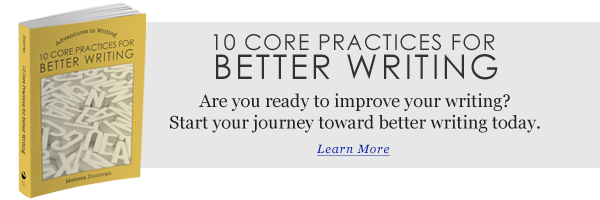The colon is one of the most clearly-defined punctuation marks. It occasionally acts as a stand-in for a comma or period (though when one of these other punctuation marks will do, the colon is unnecessary).
Most commonly, the colon functions as an introductory punctuation mark, notifying the reader that the forthcoming information supports, explains, or elaborates upon what has been said prior to the colon.
These punctuation marks are common in math and science as well as technical documentation. In creative writing, we don’t see a lot of colons unless we’re working on a script. Colons are most often seen in text where a list is being introduced.
The Chicago Manual of Style provides a succinct definition for the colon:
“A colon introduces an element or series of elements illustrating or amplifying what has preceded the colon. Between independent clauses it functions much like a semicolon, though more strongly emphasizing sequence. The colon may be used instead of a period to introduce a series of related sentences.” (Chicago Manual of Style, 15th Edition p. 257)
In this article, we’ll explore the most common colon applications for writers. The information here is not definitive as full coverage of colons would constitute a short book rather than a single blog post, but I will attempt to answer the most basic questions about using the colon in your writing.
Punctuation Marks: The Colon
Capitalization
One of the most challenging issues regarding colon usage is whether or not the word following a colon should be capitalized. Normally, it is not capitalized unless that word is a proper noun. However, there are exceptions: (again, see what I did there?)
- When a colon introduces more than one sentence, the first word following the colon should be capitalized.
- When a colon introduces dialogue, the first word following the colon should be capitalized.
- When a colon introduces a quote, the first word following the colon should be capitalized.
Complete Sentences
We most frequently see the colon used to introduce a list. In cases like this, the text preceding the colon is best formatted as a complete sentence. This, however, should be checked against the applicable style guide.
We are going to: talk about colons. (not the preferred format)
We are going to do the following: talk about colons. (Note that the text before the colon forms a complete sentence)
Colon Classifications and Examples
Below are a list of colon classes along with examples to demonstrate each type of colon in action.
Appositive colons introduce sentences that are in apposition to the sentence preceding the colon: The colon was not necessary: I deleted it.
Segmental colons introduce dialogue and are used with other punctuation marks, including quotation marks: My creative writing teacher was specific in her lecture on colons: “Only use them when necessary.”
Syntactical-deductive colons introduce a logical consequence: The sentence ended with a colon: more text was sure to follow.
Syntactical-descriptive colons introduce a description (usually a description set): The colon is similar in appearance to two other punctuation marks: the semicolon and the period.
Colons with Dialogue
The colon is commonly used to introduce speech in a dialogue (such as a script). Here is an example:
Teacher: Why did you use a colon here?
Student: I thought it looked good.
Note that in the script construct, the quotation marks are absent. If you are writing a play, screenplay, teleplay, or any other kind of script, you should check with an industry-specific style guide to ensure that you are applying proper formatting. That includes colon usage as well as quotation marks!
Using Punctuation Marks in Submissions
In an article titled “Formatting Your Manuscript – The Silent Scream,” Lynn Price, the editorial director for Behler Publications, provides a clear tip for writers who are considering punctuating with a colon. I will leave you with her advice:
Be careful with your use of colons. They have a clinic-y feel to them, and they can easily take the softness and poetic flavor out of your writing. Think about using a comma or semi-colon instead. If you don’t, chances are your editor will.






Thanks Melissa!
You’re welcome, Nasir.
Thanks for this! Its good to think about the grammar and semantics every once in a while.
Sarah Allen
Thanks, Sarah.
A misplaced or misused punctuation mark can definitely change the whole meaning of a sentence.
WIP is currently just over 100,000 – I’ve used four. Two preceded what is written on the back of a photo and the back of an envelope (and as each started with a person’s name I didn’t even have to think about whether to capitalize), the other two at the beginning of lists so think I dodged a slapped wrist there.
Colons are used so rarely we do have to stop and think sometimes 🙂
Yes, they’re rare, but they sure come in handy when you need them!